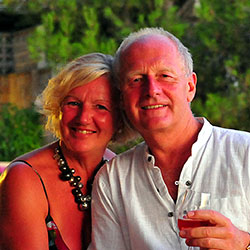It’s not likely that you’ve ever heard of Samode village in India but it offers an eye-opening contrast between medieval Indian rural life and that of the old princely families.
Situated 25kms north of Jaipur in the State of Rajasthan, it will be by-passed by those intent on a quick-fix ‘Golden Triangle’ tour of India and ignored by those now tempted by the more majestic attractions of the continent elsewhere. It would be a mistake; this is ‘real’ India.
True, it’s a little off the beaten track and is best visited on the return or outward drive from Delhi to Jaipur but it does need an overnight stop, which means that you’ve probably embarked on a more thorough investigation of Rajasthan than is normally the case.

Despite the new multi-lane ‘Expressway between Delhi and Jaipur, the Indian highway code still prevails
Due to its isolation Samode village has been bypassed, literally and figuratively, as the rest of India clamours for development and commercial gain. As a result it represents the best example of what India was actually like before the Raj and then tourists arrived and is in itself a capsule of suspended time from the 18th Century.

At the foot of the hill that boasts the magnificent Samode Palace – now a heritage hotel and the best place to stay if you’re in the area – you’ll find Samode village – a clutter of ramshackle shops, well-kept homes, shrines, tradesfolk; all surrounded by evidence of pastoral husbandry in the form of goats, cattle and crops.
Sandwiching and containing this snapshot of rural India is Samode Bagh (also a hotel but of less appeal to us) whose main attribute is it’s beautifully tended ornamental gardens that seem to pull into sharp contrast the deprivations of the common man.

As with all of India but none more so than in the more remote places, Indian people are at their most hospitable when you take the time to talk to them. Without the ‘benefit’ of tourism, you’re spared the onslaught of savvy beggars and hawkers that can dog every step in the larger cities.
There’s still a naïve interest and wonder at the presence of foreign visitors and you’re not immediately perceived as a source of income. Women still retain their modesty and are disinclined to delay for photos.
Although probably a source of amusement to the locals, taking a camel ride through the village provides an interesting perspective on the lives of locals but it’s only a stroll on foot that opens up the true nature of the community; where each shack is dedicated to the manufacture of either ladles, or adze heads or screws, nails and washers, whilst grain, rice and flour is distributed from barrels at shop fronts.
Private homes range from those that are nothing but tin sheds with their bare-earth fenced angam containing the family’s buffalos, to those which are grander and reflect the architectural styles of the palace itself.
Colour and charm abound, albeit life is basic in Samode; women work as hard, if not harder, than do men and facilities and amenities are few.
The palace, by contrast, is all that you would expect of a Prince’s palace and more. As a hostelry it’s exceptionally good, as you would expect of the Samode Group of hotels, but it’s the construction and decoration that sets it apart from its surroundings.
Set around an elevated courtyard, reached by a majestic flight of steps from the garages that now house vintage cars instead of horse and carriage, the hotel is imposing but not opulent.
That is until you venture into the quieter recesses of this edifice and discover the highly ornate, glittering meeting halls and private rooms that give some insight into the decadence of earlier dynasties.

Used by Mario Testino as a backdrop for his Vogue India fashion photoshoot with Kendal Jenner, the palace oozes style and ostentatious wealth in stark contrast with its hinterland but all of it, the village included, has mellowed into a faded and more benign presence.

 Gone is the autocratic rule of the princes and the subjugation of the serfs, replaced instead by a mutual dependency and acknowledgment that to survive today each must rely upon the other for its continued existence in this ever more demanding world.
Gone is the autocratic rule of the princes and the subjugation of the serfs, replaced instead by a mutual dependency and acknowledgment that to survive today each must rely upon the other for its continued existence in this ever more demanding world.
Don’t regard Samode as an example of all the things that were bad in medieval times, rather as a superbly preserved snapshot of a hierarchy that once was and which operating as it is, in today’s world, is an infinitely favourable alternative to the burgeoning haves and have not culture of metro life in India.

If you’d like information about obtaining limited edition copies of Mario Testino’s photo shoot at Samode Palace – in aid of the charity ‘Girl Rising India’ – dedicated to education for marginalised girls in India, then follow this link to Mario Testino’s website – Mira Mira
If you simply want more information about Samode Group’s unique properties then follow this link to Samode Palace – or why not ask us to arrange your own tailor-made travel throughout India – see below.

 Let us plan your own inspiring journey to Rajasthan and throughout India
Let us plan your own inspiring journey to Rajasthan and throughout India
Why not download the TLC World guide brochure or give us a call today on 01202 030443, or simply click ‘enquire’ to submit your own personal itinerary request






































